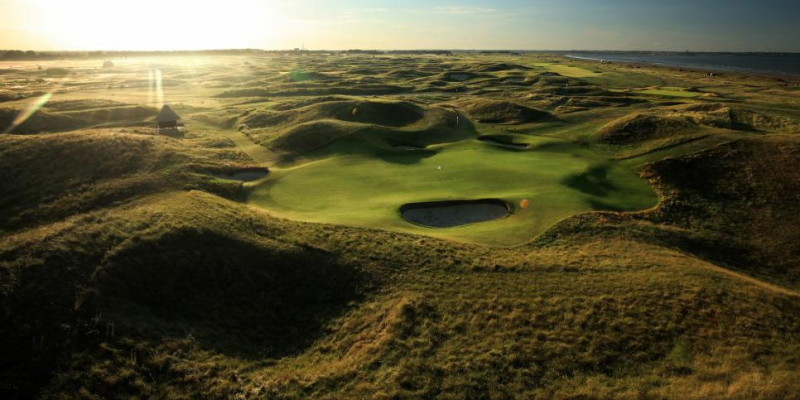By definition, the title is authoritatively regal. Royal Troon, host of this week’s 152nd British Open Championship, is one of 69 clubs from around the world—and seven in the Open rota—that can claim the label “Royal,” a distinction brimming with pageantry and, in most cases, import.
Indeed, having the distinction brings with it an added level of authority. But it also begs the question: Just how does a course earn the right to call itself Royal?
According to Scott Macpherson’s definitive 2013 book, Golf’s Royal Clubs, it began in 1833. The captain of the Perth Golfing Society, Lord Kinnaird, went on a trip to London to address King William IV, who had recently taken up the game. While there, Kinnaird asked the King if he would become a patron of the Society and if the club could, in turn, call itself the Royal Perth Golfing Society. William agreed, and a movement was born.
Britsh Open 101—Everything you need to know about the major
A year later, the Society of St. Andrews Golfers, with royalty among its membership, renamed itself the Royal and Ancient Golf Club of St. Andrews.
Earning Royal status hasn’t been as simple as having royalty among your club. Royal Aberdeen in Scotland, for instance, added the label in the 1870s only to be turned down by the crown when they requested the official designation (it wasn’t until 1903 that they finally were approved).
As interest in the distinction picked up in the late 1800s, a formal application process ensued, with the reigning monarch having final approval. According to Macpherson, the title officially was restricted to “institutions of eminence, long standing and secure financial position, and devoted to national, charitable and scientific objects.” This held particularly relevant to clubs in British colonies who were also seeking the label.
Even so, Royal status has been given to six courses in Canada (first to Royal Montreal in 1884), eight in Australia (first to Royal Melbourne in 1895), six in Africa, three in Asia, two in New Zealand and two in continental Europe.
There is no real account of the number of courses that have applied for Royal status and been denied. Sir Peter Allen in his book, The Sunley Book of Royal Golf, noted: “At the conclusion of our researches, we have to admit that no pattern could be found. Those that strove for the title often seem to have got it, especially in the Dominons and Empire.”
The biggest run of courses to gain Royal status came around the turn of the 20th century. From 1882 to 1897, 19 clubs received the honor. And from 1902 to 1937, 21 more were named. During Queen Elizabeth II’s time on the throne from 1952 until her passing in 2022, nine new courses added to the Royal list, the last three coming in 2010 (Auckland, the second Royal course in New Zealand), 2012 (Moresby in Papua New Guinea) and 2013 (Homburger in Germany, the second course in continental Europe).
It was also during her reign, 1978, that Troon received its Royal status, the most recent of the Open rota courses to be given the honor. That was the year of the club’s 100th anniversary, and 55 years after hosting the first of its nine previous Opens.

A view looking back to the tee of the par-3 sixth hole at Royal St. George's
David Cannon
ROYAL COURSES IN THE OPEN ROTA
Liverpool (earned status in 1871)
Portrush (1892)
St. George’s (1902)
Lytham & St. Annes (1926)
Birkdale (1951)
Troon (1978)
*The Old Course is operated by the Royal and Ancient Golf Club of St. Andrews, which, obviously has “royal” status granted in 1934.
MORE: Get to know the golf courses of The Open rota